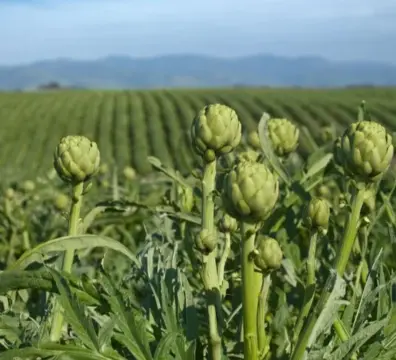Project Report For Artichoke Farming
Introduction
Artichoke farming is the cultivation and harvesting of artichokes, a type of thistle plant that is grown for its edible flower buds. The plant is native to the Mediterranean region and has been cultivated for thousands of years. It is a perennial plant that typically grows to a height of 3-4 feet and has large, spiky leaves. The edible part of the plant is the immature flower bud, which is typically harvested in the spring or early summer.
Artichokes are typically grown in areas with mild winters and cool summers, such as the coastal regions of California, Chile, and Italy. The plants are usually planted in the fall and harvested in the spring or early summer. They require well-drained soil and full sun exposure and typically take about 6-8 months to reach maturity.

Artichoke farming is a labor-intensive process, as the plants require regular watering, fertilization, and pruning. Pests and diseases, such as aphids and verticillium wilt, are also a concern for artichoke farmers. To combat these issues, farmers may use pesticides and other chemical treatments, as well as organic methods such as companion planting and crop rotation.
Artichokes are typically sold fresh, canned, or frozen. Fresh artichokes are usually sold in supermarket and specialty food stores, while canned and frozen artichokes are often used in recipes such as dips and casseroles. In recent years, there has been an increasing demand for organic and locally-sourced artichokes, as more people are interested in eating healthy and supporting local farmers.
Project Report Sample On Artichoke Farming
Get Completely Custom Bankable Project Report
Artichoke farming is a niche market, with a relatively small number of growers, but it can be a profitable endeavor for those who are able to successfully cultivate and market the crop. Due to the labor-intensive nature of artichoke farming, and the relatively high costs of production, the retail price of artichokes can be higher than other vegetables.
Market Potential Of Artichoke Farming
The market potential for artichoke farming is strong, with increasing consumer demand for the vegetable due to its health benefits and versatility in cooking. According to a report by MarketsandMarkets, the global artichoke market is expected to grow at a CAGR of 5.4% from 2020 to 2025, reaching a value of $1.4 billion by 2025
Expenses

Product Cost Breakup

One of the main drivers of the market is the increasing awareness of the health benefits of artichokes. They are a good source of fiber, vitamins, and minerals and have been shown to have antioxidant, anti-inflammatory, and cholesterol-lowering properties. As consumers become more health conscious, they are seeking out nutrient-dense foods like artichokes. Another driver of the market is the versatility of artichokes in cooking. They can be eaten raw, grilled, steamed, fried, or stuffed and are used in a variety of cuisines, from Mediterranean to American.
This versatility means that artichokes can appeal to a wide range of consumers and can be used in a variety of dishes. The market for fresh artichokes is also growing, as more consumers are opting for fresh produce over canned or frozen options. This presents an opportunity for farmers to increase their sales by growing and selling fresh artichokes.
The United States and Italy are the largest producers of artichokes, accounting for over 75% of global production. However, other countries like Spain, Peru, and Chile are also significant producers. In the U.S., California is the largest producer of artichokes, and the state accounts for over 90% of the country’s production. However, there are some challenges facing the artichoke farming industry.
